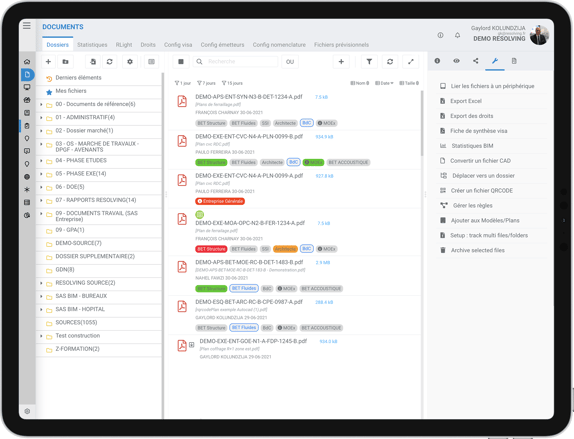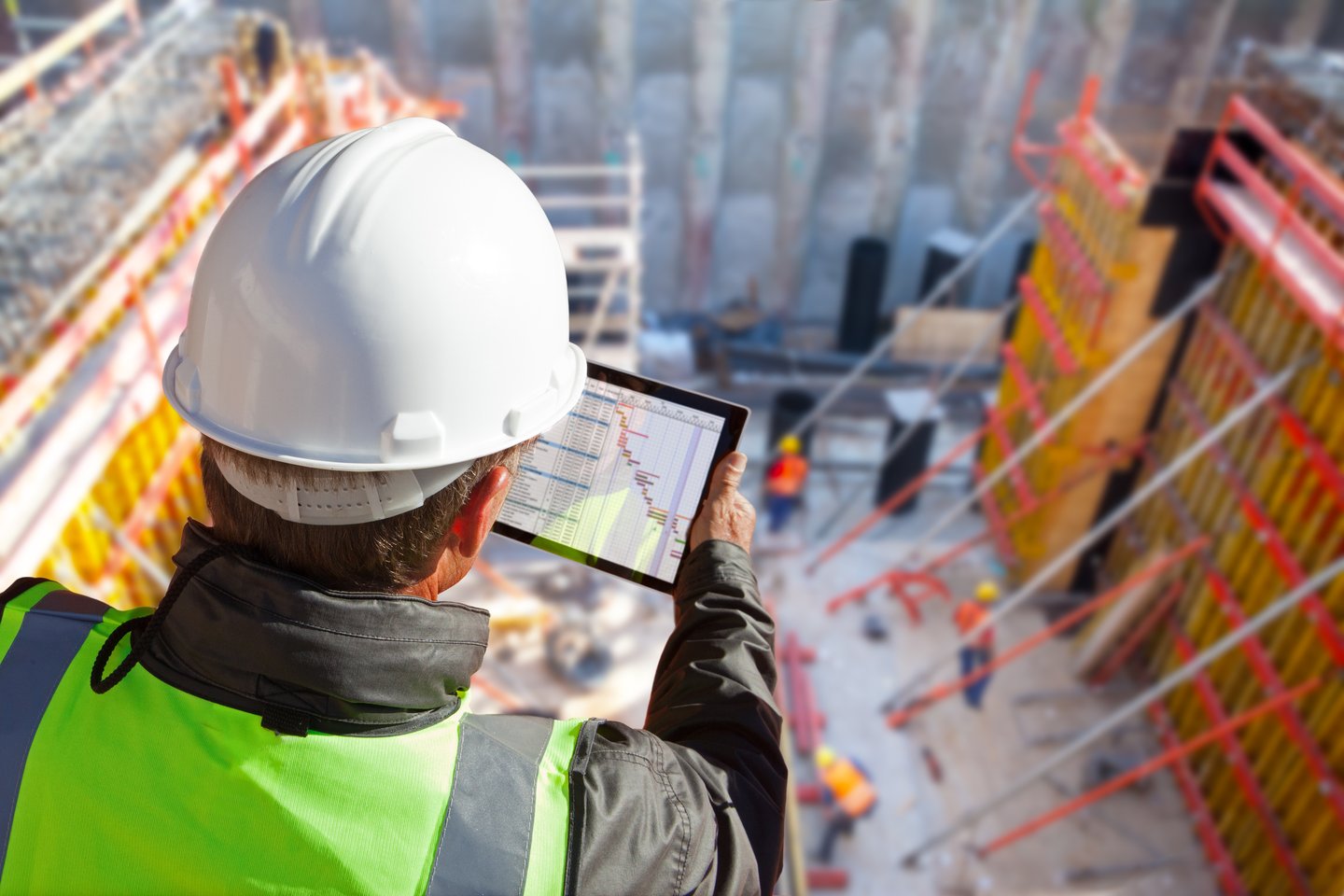Conducting a construction project involves multiple parties and requires not only different resources but also constant checks of the work carried out to make sure that everything is going to plan. To make such monitoring easier, it is not uncommon to use a management tool. Used by all of the participants involved in the project, this tool mainly assists with decision-making. It groups together action plans and often indicates real-time deviations from objectives. In most cases, the main contractor, the final user of the management tool, selects the project monitoring solution. However, the data belongs to the project owner. This is the only party to be present during all of the project phases, while the main contractor only works in response to the customers’ instructions. Between the main contractor and the project owner, who should organize and manage the management tool in practice? Find all the answers in our article.
What is a management tool?
A management tool is a device (software, digital platform, etc.) that tends to facilitate the implementation of actions and decision making in order to achieve the objectives set as efficiently as possible. As a strategic and operational tool, the management tool makes it possible to:
- collect information;
- produce dashboards;
- decide on corrections to be made;
- manage the budget and allocate resources;
- monitor the progress of the project, etc.
When the management tool is used on a construction site, it is easier to optimize schedule management and project duration, limit additional costs linked to unforeseen events or delays or coordinate all the stakeholders present.

The need for a management tool on construction sites
A construction site must be managed in a perfectly coordinated manner by all the operators involved. It is the duty of the site manager to ensure that the work progresses as smoothly as possible. S/he must also meticulously go through the various stages that make up the project, keeping to the schedule and budget. Only by following these instructions to the letter can delivery take place on time and without financial overruns.
Works monitoring on a construction site is so complex that, nowadays, it has become almost a requirement to work with a management tool. Intuitive and innovative, such a tool increases efficiency and productivity.
Thanks to such features as dashboards and relevant reports, these digital tools make it possible to effectively manage the project from start to finish and to make informed decisions more easily.
However, to take full advantage of all these benefits, the digital platform you are going to work with must be chosen carefully. Similarly, this task must be entrusted to the right person.
Between the main contractor and the project owner: who is best placed to select the management tool for the construction site?
The project owner is present at every stage of the project
The project owner defines and oversees the project. S/he makes decisions and specifies the project's objectives, schedule and budget. Because of their position, project owners should be able to choose and roll out the software to work with on the site since they are present at every stage of the project.
However, as explained in the introduction, in most cases, the project monitoring solution is chosen by the main contractor. Even though s/he is not the best person to make such a decision. The main contractor is the final user of the management tool and coordinates the companies involved in the execution phase of a construction project.
The project owner is linked to all the trades working on the site
For a management tool to be adopted, it must be possible for all of the project stakeholders to use it. During a construction project, only the owner is contractually linked to all of the trades involved.
Whereas the main contractor is only attached to one party and participates during a specific stage of the project: handover of the final product. Logically, the project owner is therefore in the best position to define which tool best suits all stakeholders.
The project owner can better control data privacy and accessibility
Sometimes the customer does not wish to disclose certain information. In this case, it is the project owner who guarantees the privacy of the data. By entrusting the project owner with the organization and oversight of the management tool, s/he can choose who has access to data and in what way. Given the current high turnover rate among main contractors, it is crucial to control access to the digital platform as much as possible and to restrict data accessibility.
-DESKTOP%20(FR)%20smartphone.jpg?width=598&name=PRODUCTS-BIM%20(2)-DESKTOP%20(FR)%20smartphone.jpg)
Rely on a single platform for a more seamless experience
Note that in general, it is best to work with a single management tool. As the more platforms you use, the more time you will need for their deployment which, each time, requires:
- the creation of the project in the tool;
- the implementation of workflows;
- setting up and managing user access, etc.
Similarly, you will need to spend time training users to make sure they can find the information they need. In short, with each tool deployed, you run the risk of losing information and visibility on project monitoring. You therefore lose a lot of efficiency.
Similarly, it is better to choose one tool for all teams rather than one tool per team, for example. Here again, you increase the sources of potential incompatibility between tools (formats, nomenclatures, versioning, depth of information, etc.). And you may once again be wasting time unnecessarily. In this case, at Kairnial, our BIM tool, which is aimed at all teams, can contain an infinite level of detail on the construction objectives (unlike other publishers who only offer 2D, for example). You therefore have one efficient tool which all of your teams can use.
The advantages of using site management software are well known. However, for maximum efficiency, the project owner should be defined as the decision-maker concerning the project management solution. S/he is in the best position for this task. Appointing the project owner as the decision-maker of the management tool also means choosing the trade that is capable of laying down the quality standards of the company. Given the problems that can arise on a construction site (hikes in material prices, delays in the project’s progress, etc.), it is essential to maintain control over what can be controlled, such as, in this case, the choice of the project management platform.


